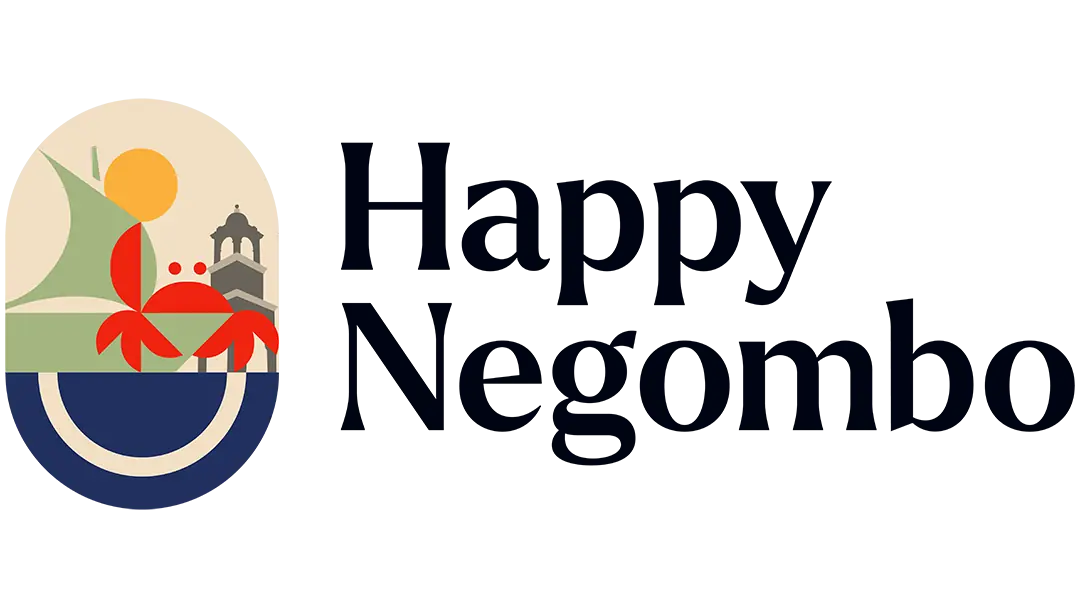Negombo Fort, or as locals pronounce it, Migamuwa Balakotuwa, is actually a small but very important and significant location in Sri Lanka. One could argue it witnesses Sri Lanka’s rough colonial past, where foreign powers battled for control over the island. This amazing structure was built by the Portuguese in the early 17th century. This small yet significant fort was strategically placed to defend Colombo and solidify Portuguese dominance.
Back in the day, the fort at Negombo was likely the fourth most important fort after Colombo, Jaffna, and Galle. The original Portuguese fort wasn’t much—just a square with walls, two redoubts, and five guns.

Over time, this location held a significant position in the ongoing struggle between the Portuguese, Dutch, and British. Let me tell you a bit more about this location and why you should definitely visit here when you’re in Negombo. Today, this historic site stands as a testament to the rich colonial history of Sri Lanka and has become a popular tourist attraction for visitors from around the world. Its well-preserved architecture, combined with the scenic beauty of Negombo, makes it a must-visit for anyone looking to explore the cultural and historical roots of the region. Whether you’re a history enthusiast or simply looking to enjoy a unique travel experience, this place offers a glimpse into the past while providing an unforgettable experience in the present.
The Portuguese Origins of Negombo Dutch Fort
Negombo Fort might seem very small today to hold such an amazing tourist attraction, but back when the Portuguese built it, the story was different. It is located about 30 km (or roughly 19 miles) north of Colombo. The Portuguese built the fort to safeguard their stronghold in Colombo.
Locally, it’s known as “Migamuwa Balakotuwa” in Sinhala and “Nīrkoḻumpuk Kōṭṭai” in Tamil, tying it deeply to the area’s cultural identity.
Now, in all honesty, the original structure wasn’t impressive. It wasn’t some grand fortress with towering walls or cutting-edge defenses. João Ribeyro, a Portuguese chronicler, described it as a simple square enclosed by walls with just two redoubts (basically fortified outposts). They had five cannons, a captain, a few soldiers, and even a chaplain—likely for morale more than anything else. It was far from a powerhouse, but it was a foothold the Portuguese desperately needed.
As you can imagine, holding onto Negombo Fort wasn’t an easy task. In February 1640, Dutch forces led by Philip Lucasz made their move, easily capturing the fort. The Portuguese didn’t give up easily, though. Over the next few years, they launched multiple efforts to reclaim their fort, finally succeeding in December 1643. When they got it back, they wasted no time in strengthening its defenses, knowing the Dutch would try again.
But despite their best efforts to reinforce and fortify the place, the victory was short-lived. Just a month later, in January 1644, the Dutch, now commanded by François Caron, recaptured the fort. The Portuguese couldn’t hold out this time, and their defenses fell. The struggle for Negombo was far from over, but the fort’s story was already beginning to reflect the broader colonial tug-of-war happening across Sri Lanka.
British Occupation and the Demolition of Dutch Fort in Negombo
By the time the British arrived at Negombo Fort in February 1796, the fort’s strategic value had significantly decreased. The battles between the Portuguese and the Dutch were over, and the British didn’t face that much resistance. In fact, the takeover was more of a formality than a conquest. The British forces simply walked in and took control, and that was that.
However, the British had different plans for Negombo Fort. Instead of maintaining it as a military post, in the late 1800s, they demolished most of the structure, using the very stones that had once formed its walls to build a prison.
Though much of Negombo Fort has been lost to time and repurposed by the British, not all of it has disappeared. Today, if you visit the site, you’ll still find traces of its fortified past. The eastern rampart stands as a reminder of what once was, along with the northern and southern mounds that mark the location of the former bastions. These mounds, though now covered in grass and dirt, hold echoes of the fort’s storied history.
One of the most striking features that remain is the recessed arched gateway.
Above it, a granite slab is inscribed with the date 1678, and perched above the inscription is a high, decorative gable. It’s a small detail, but it offers a glimpse into the fort’s grandeur during its peak. The fort might be a shell of its former self, but these remnants stand as a testament to its resilience and importance over the centuries.
Even now, the site serves a practical function, as it is currently used by Sri Lanka’s Department of Prisons. It’s hard to ignore how the fort has continually adapted to the changing tides of history, from a battleground to a prison and now a historical landmark.
In the end, the story of Negombo Fort is one of constant change and adaptation. From its humble beginnings as a simple Portuguese fort to its reconstruction in 1672 by the Dutch, the architecture reflects the fortifications that once protected this strategic coastal town. Though much of the fort has faded into history, its remnants still stand tall today, quietly observing the bustling life around them. And while the Negombo Fish Market now gets most of the attention, there’s something special about walking through the site of a fort that was once at the center of so much conflict. It’s a reminder of how history shapes the places we pass by every day, and how even old stones can still have stories to tell.
